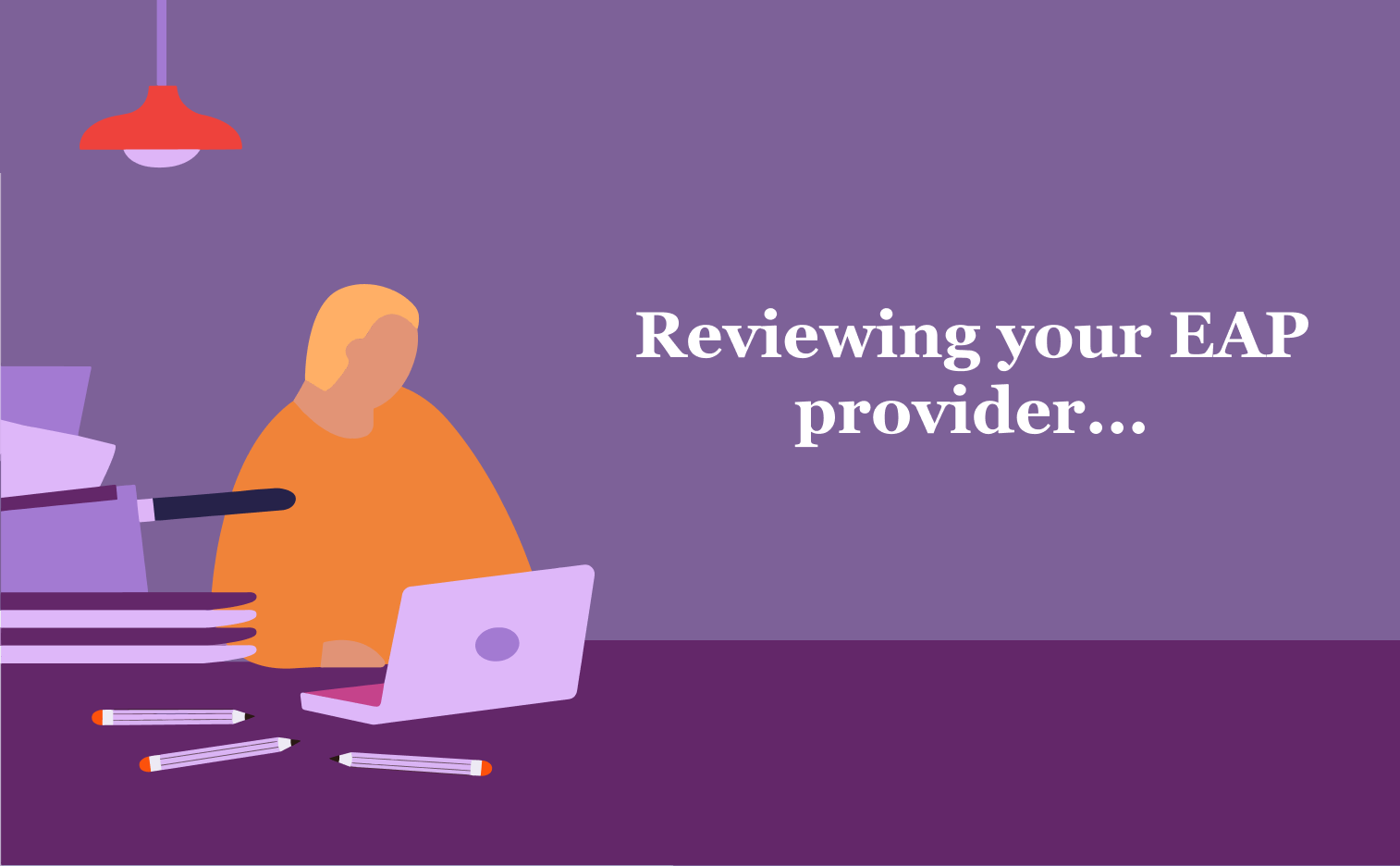3 Signs of Burnout, 6 Causes, & 4 Key Strategies to Address It
Learn about the three common signs of burnout, explore its six main causes, and discover four key strategies to address and prevent burnout. Take control of your well-being and restore balance in your life.

Suzi McAlpine remembers the heartbreaking moment her journey into researching burnout began.
She was dropping her 7 year old son off at school one day, anxiously thinking forward to the work presentation she had coming up that morning. She was so preoccupied with it that when her son asked her for a hug, she froze up.
“I don’t have time,” she said, and bundled her son out of the car and drove off.
A few minutes later, she was pulled over on the side of the road in tears.
“What is wrong with me that I don’t have the capacity to hug one of the most important people in my life?”
She didn’t realise at the time, but this is one of the classic signs of burnout - the way people distance themselves from those closest to them when they’re going through it.
Suzi was burnt out, but it took time away from work to realise it.
She’s gone on to become a best-selling author, and one of New Zealand’s authorities on leadership training and implementing cultural change that empowers teams and workplaces to minimise the instances and impact of burnout.
The scale of burnout
HBR estimates burnout is a global issue that costs between $125-190 billion in healthcare spending every year.
Employees that are burnt out take more sick days, and leave the workplace for other opportunities more often. When they are at work, they’re not as productive as usual. The term presenteeism has been coined to describe someone being present at work, but being far less effective than they’d normally be.
In New Zealand, AUT Professor Jarrad Haar discovered an alarming issue Kiwis have when it comes to recognising burnout in themselves.
In a study, 35% of respondents were classified as being severely burnt out, but only 4% put themselves in that category. Professor Haar says this highlights the challenge of self-diagnosing burnout, and shows how preventing and dealing with it is a group effort
“Knowing the signs of burnout is key to helping keep it at bay. If we can’t rely on ourselves, then co-workers, friends, family and whānau might be needed to keep an eye on our burnout levels. Indeed, we must encourage those who are clearly exhausted, emotional, and doubting the importance of their job to take the time they need to rest and recover.”
In a separate study, Professor Haar identified a stark ethnic imbalance in burnout as well.
He found Māori are statistically at a much higher risk of being burnt out compared to Pakeha - 50 percent for Māori and 25 percent for Pakeha.
3 signs of burnout
In her years of study and work with a wide range of organisations and business leaders, Suzi McAlpine has identified patterns that contribute to burnout, and how it manifests in people.
She leans on the research of some of the world’s leading experts, including the joint efforts of Christina Maslach and Michael Leiter.
As Jarrad Haar’s research above shows, one of the big challenges in addressing burnout is recognising it.
Knowing what to look for is a good start, and organisations that get better at spotting the red flags are better placed to catch burnout early and minimise its impact.
1. Chronic fatigue
This tends to be a universal symptom that the overwhelming majority of people who are burnt out will feel.
In the context of burnout, chronic fatigue is feeling exhausted all the time - when you take a holiday, you come back just as exhausted as when you left.
This is the main difference between chronic fatigue and general tiredness.
2. Increased cynicism or depersonalisation
This is Suzi’s “no hug” situation. It’s when things that don’t usually irritate you, do - sometimes to an unreasonable degree. You might even know it’s over the top, but you have nothing left to give and can’t help but have an extreme reaction.
People who are burnt out are often disillusioned, and have a short fuse.
This can also include rejecting things they normally take pleasure in, for example not wanting to see certain people or do certain things.
3. Reduced professional efficacy
Burnt out people just don’t perform in the usual way at work. Suzi uses a second-hand analogy that it’s like running a marathon in molasses.
“It’s when you’re working harder, digging deeper, but you don’t feel like you’re getting ahead. Things you used to do easily suddenly take Herculean effort,” she says.
It can also be self-fulfilling, where a lack of self confidence manifests in a poorer quality of work.

6 causes of burnout
Workplaces shouldn’t just rely on identifying burnout as a strategy to overcome it. Burnout is a costly issue, financially and non financially, and organisations need to understand how their culture and dynamic allows, or even encourages, burnout to happen.
Any one of these causes can lead to burnout situations, or it can be multiple causes at once. It’s important for organisations to assess which of these they might be at risk of, and look to address them.
These are Suzi McAlpine’s six common causes of burnout.
1. Overwork
Clearhead data shows overwork is one of the most common causes of burnout.
It happens when ambitious organisations don’t have the resources that are required to achieve a result.
This can present in a range of ways, including having a lack of prioritisation or clarity, a culture of overwork, excessive hours, unpredictable work flow or unrealistic deadlines.
Knowing this, it’s critical for managers to understand what’s realistically possible with the staff they have, and advocate for their people to ensure expectations and workloads don’t exceed capabilities.
2. Lack of control
When workers have little or no influence over decisions that affect them, they have accountability without power.
This feeling of having no control means individuals are accountable to the work they do, but have no power over what their focus is or what their workload looks like.
Often, staff are unable to work in their strengths because they have their workload dictated to them. It can suck the enjoyment out of the job, and sometimes mean the work they do is different to their job descriptions.
3. Isolation
Staff can be isolated in a raft of ways; physically, socially or ideologically.
Things like race or gender can isolate minorities if not managed appropriately, and excessive politics or bullying also play a role.
If there’s a lack of psychological safety or trust within a team, individuals can become isolated by not being able to contribute, or being hurt by the way they’re treated when they do.
When people feel isolated, they’re less likely to talk to someone about how they feel. Burnout is able to grow because it’s left unaddressed, and staff feel less connection to the workplace and their colleagues.
4. Absence of fairness
Fairness at work comes through in a range of ways, and when things feel unfair, it can feel like the effort someone’s putting into their job isn’t worth it.
- Pay. If someone’s putting in more hours, or doing more challenging work than what’s reflected in their pay packet.
- Perks. If individuals constantly miss out on perks of the job, or feel like they do.
- Prestige. If someone isn’t appropriately recognised for their good work, or if they miss out on a promotion they feel they deserve.
Fairness can also be a factor in workplace discussions, such as whether someone feels heard in meetings or not. The workplace social hierarchy can have something to answer for in this regard.
5. Insufficient rewards
This is similar to the last point on fairness, although it’s more about intrinsic rewards than tangible ones.
For example, if someone doesn’t feel genuinely valued or cared for by their organisation, it contributes to the sense of helplessness that burnout can prey on.
Managers have a big influence. Poor leadership is a big factor in cases of burnout, and managers need to actively support their people so they feel appreciated and valued.
6. Mismatched values
When an employee feels their personal values don’t align with the values of their employer, it feeds back into a sense of disillusionment.
Over time, they feel they have to make constant trade-offs between what they believe and what they’re working towards.
4 strategies to address burnout
The best strategy for dealing with burnout is to proactively instil a company culture that prevents it from being a problem.
Suzi’s four strategies can, of course, be implemented in response to employees burning out, but it’s always preferable to avoid it from being an issue in the first place.
1. Recognise
You can’t address a problem if it remains hidden, so the first strategy is to get better at identifying the signs of burnout.
Again, this feeds back into Professor Haar’s research above that New Zealanders are not always good at recognising burnout in themselves, so it needs to be a team effort.
In particular, statistics show that people in law, healthcare, teaching and professional services are at greater risk of burning out. These sectors need to be particularly aware of what their people are experiencing at any point in time.
The Maslach Burnout Inventory is a simple survey tool that can help to recognise the degree of burnout someone is experiencing.
2. Destigmatise
Suzi quotes American professor and speaker Brené Brown on this point, saying “shame never drives positive behaviour.”
Burnout is shrouded in shame and stigma. In the workplace, people can be afraid to say they’re overwhelmed because it can feel like an admission that they’re not up to the job. It feels career-limiting, particularly for ambitious individuals that may already be at greater risk of burning out.
However, vulnerability is an important aspect of being a psychologically safe workplace, where people can share how they’re really feeling and not be judged for it.
Leaders have a critical role in displaying the kind of vulnerability they want to see in others, in order to create a safe place for frank, honest conversations. If managers and leaders have been through burnout, or have a relevant story, then by sharing it, you give your employees the freedom to do the same.
3. Socialise
Social connection within organisations makes a huge difference, but this goes beyond just being colleagues that can work well together.
Suzi talks about being purposeful about creating meaningful social connections. As well as the typical “What are we doing” work conversations that happen every day, she says it’s important that people are also having “How are we doing” conversations.
This helps to normalise wellbeing and is a tangible display of how it’s being prioritised.
Managers can start work meetings by asking about how people are feeling - and again, it’s important they take a leading role in this. In 1-on-1 catch ups, they can make a point of asking about how team members are going - particularly if they’ve been through a busy period.
Making wellbeing conversations mainstream is another way of bringing burnout out of the shadows and putting it in the spotlight.
4. Organise
Organise is about how teams can prioritise or arrange their work better to prevent it from being overwhelming.
For example, workplaces that have too many priorities don’t actually have priorities at all. Be very specific about what is and isn’t important.
This may mean having to delay or ditch things - being deliberate about this can really help to give people direction and reduce the feeling of being overwhelmed by their workload.
Suzi calls it reducing the pebbles in people’s shoes, and it might also include cutting the red tape or bureaucracy that holds work up.
Having good delegation and creating clarity in tasks also helps a lot.
How Clearhead can help
Clearhead is a digital wellbeing platform that partners with workplaces to focus on improving the wellbeing of their people.
We have a range of tools that help organisations to proactively improve wellbeing, including detailed reporting on burnout and techniques that help individuals develop mental health skills that improve their resilience.
In-depth quarterly wellbeing data insights shine a light on workplace cultures, allowing employers to recognise areas of improvement, and providing honest feedback on wellbeing strategies.
To find out more on how Clearhead can help to reduce burnout in your organisation, book a free, no obligation Clearhead demo today.
Watch our interview with Suzi McAlpine here or listen to the podcast here





